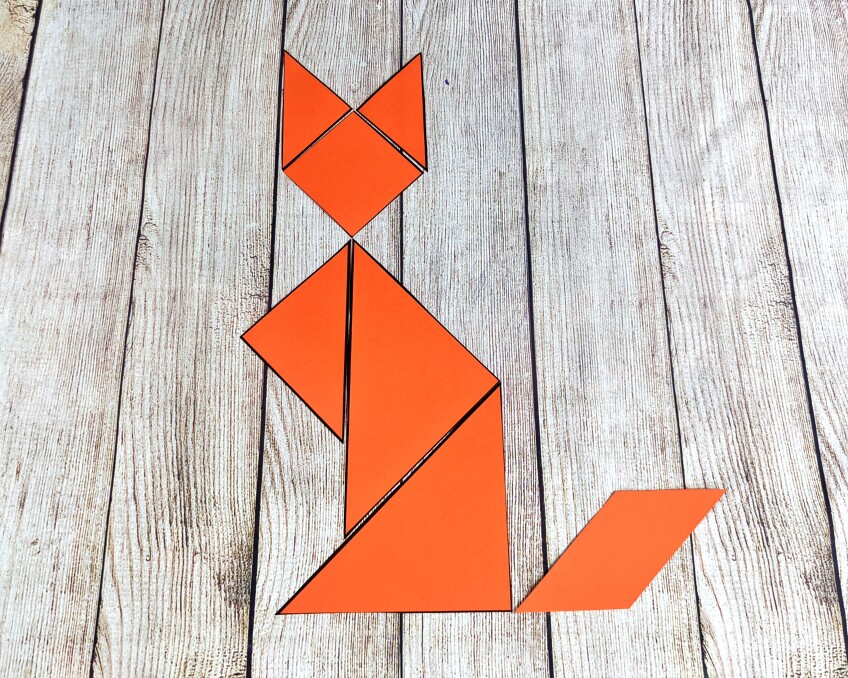Five Out-of-the-Box Kids Math Activities You Can Do with Cereal Boxes

My daughter could eat cereal at every meal — breakfast, lunch, and dinner. We pack dry cereal as our go-to snack for car rides or walks. We nibble on fortified varieties during virtual storytime lunch with faraway family and friends. With a cereal-eating machine in my household, the empty boxes pile up in the recycling bin.
But there’s no need for those boxes to go out the door immediately! Cereal boxes can be transformed into fun craft projects that boost early math and engineering skills.
You can use cereal boxes to design a tangram puzzle, make a scale, design ramps, construct a city, and make pretend masks. Remember to talk about what you're doing with your child! Each step in these activities is filled with opportunities to engage in math talk, from talking about shapes and counting them out, to seeing if you can spot patterns in what you're doing and so much more!
Design a Tangram Puzzle

Invented in China nearly 200 years ago, a traditional tangram is a two-dimensional re-arranged puzzle created by cutting a square into seven geometric shapes. In this tangram-inspired project, you can use your imagination to create different pictures using shapes.
To start, open up the cereal box and help your child draw and cut two sets of shapes like rectangles, squares and triangles in different sizes.
Next, put the pieces together to form a picture and ask your child to replicate the image.
Take turns creating the model image and encourage your child to use their imagination to design different objects. Discuss the characteristics of different shapes with math talk with your child to build early math skills. You can ask questions like “How is this triangle different from this square? How are these triangles different from each other?”
No cereal box? No problem! You can also make a tangram with construction paper and a template.
Construct a City
Use a variety of boxes to build a city together. Draw and cut doors and windows on the boxes as you talk about what shapes they are. You can cut one box in the middle to make two shorter structures for your city. Want to take it up a notch? Practice skip counting while you build and decorate!
Make Robot Masks
Use your imagination to turn your cereal box into a robot mask! Open the cereal box up and lay it flat on a hard surface. Help your child draw the shape for the mask. Starting with a circle, oval or rectangle is a good idea. Then talk about the different shapes that you want to use to make the eyes, nose and mouth. Depending on your child’s age, you can help them by cutting the shapes out of the mask. Then, have your child decorate it however they like. Need more ways to keep your child’s math batteries charged with robots? Make fun robot piñatas or more traditional space robots like the ones in the video below.
Make a Scale
Explore weight, mass and size by creating a scale at home with cereal boxes. It’s a good idea to use an unopened cereal box for the base and empty one for the top. To start, stand one cereal box upright. On top, lay another box perpendicular to the base so it is balanced.
Using things from around your house, select two objects and make predictions on which object is heavier. Place them on top of the scale and see if it topples over or stays upright. If it falls, discuss which object weighed more and why it caused the scale to fall. If it stays upright, talk about how the objects might be different sizes but weigh a similar weight.
There's so many objects to compare! If you would like to try your hand at balancing smaller things, try making a homemade scale with a ruler and cups. You cal also make one with a hanger to weigh slightly larger items.
Design Ramps
Make ramps for your child’s favorite balls or toy cars. All you need to do is prop cereal boxes over objects of different heights to see how they make things move faster or slower depending on the slope. You can find detailed instructions on our website on how to build them, plus questions to get the a math conversation going with your child.
